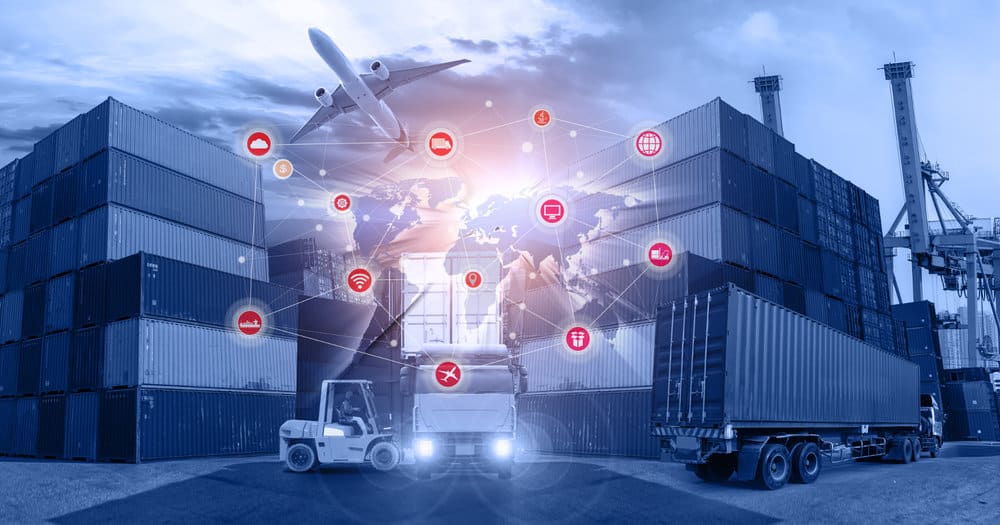-
Table of Contents
Revolutionizing Logistics: Empowering Transportation with Edge Computing.
Edge computing in transportation refers to the deployment of computing resources and data processing capabilities closer to the source of data generation, such as vehicles, sensors, and infrastructure, rather than relying solely on centralized cloud computing. This approach revolutionizes logistics by enabling real-time data analysis, faster decision-making, improved efficiency, and enhanced safety in the transportation industry.
Benefits of Edge Computing in Transportation: Enhancing Efficiency and Safety
Edge Computing in Transportation: Revolutionizing Logistics
The transportation industry is constantly evolving, with new technologies and innovations driving its progress. One such technology that is revolutionizing logistics is edge computing. Edge computing refers to the practice of processing data near the source, rather than sending it to a centralized cloud server. This approach offers numerous benefits for the transportation sector, enhancing efficiency and safety.
One of the key advantages of edge computing in transportation is improved efficiency. By processing data at the edge, near the devices or sensors generating it, latency is significantly reduced. This means that critical information can be analyzed and acted upon in real-time, without the need for data to travel back and forth to a centralized server. For example, in autonomous vehicles, edge computing enables instant decision-making, allowing the vehicle to respond to changing road conditions without any delay. This not only improves the overall efficiency of transportation systems but also enhances the passenger experience by ensuring a smooth and uninterrupted journey.
In addition to efficiency, edge computing also plays a crucial role in enhancing safety in transportation. With the ability to process data locally, edge devices can quickly identify potential risks and take appropriate actions to mitigate them. For instance, in the case of a truck carrying hazardous materials, edge computing can analyze sensor data in real-time to detect any anomalies or leaks. This immediate response can prevent accidents and minimize the impact on both the environment and human lives. Furthermore, edge computing enables vehicles to communicate with each other and with infrastructure, creating a connected ecosystem that enhances overall safety on the roads.
Another benefit of edge computing in transportation is its ability to handle large volumes of data. With the proliferation of connected devices and sensors, the amount of data generated in the transportation sector is growing exponentially. Edge computing allows for the processing and analysis of this data at the edge, reducing the burden on centralized servers and networks. This not only improves the scalability of transportation systems but also reduces the cost and complexity associated with transmitting and storing massive amounts of data. As a result, transportation companies can make better use of their resources and focus on delivering efficient and reliable services to their customers.
Furthermore, edge computing enables transportation companies to leverage advanced analytics and machine learning algorithms. By processing data at the edge, these technologies can be applied in real-time, providing valuable insights and predictions. For example, by analyzing data from sensors embedded in vehicles, edge computing can identify patterns and trends that can help optimize routes, reduce fuel consumption, and improve maintenance schedules. This data-driven approach allows transportation companies to make informed decisions and continuously improve their operations, leading to cost savings and increased customer satisfaction.
In conclusion, edge computing is revolutionizing logistics in the transportation industry. Its ability to enhance efficiency, improve safety, handle large volumes of data, and enable advanced analytics makes it a game-changer for transportation companies. By processing data at the edge, near the source, edge computing reduces latency, enables real-time decision-making, and creates a connected ecosystem that enhances overall safety on the roads. Moreover, it allows transportation companies to leverage advanced analytics and machine learning algorithms, leading to cost savings and improved customer satisfaction. As the transportation industry continues to evolve, edge computing will undoubtedly play a crucial role in shaping its future.
Implementing Edge Computing in Transportation: Challenges and Solutions
Implementing Edge Computing in Transportation: Challenges and Solutions
Edge computing has emerged as a game-changer in various industries, and transportation is no exception. With the increasing demand for real-time data processing and analysis, edge computing has revolutionized logistics by bringing computing power closer to the source of data generation. However, like any technological advancement, implementing edge computing in transportation comes with its own set of challenges. In this article, we will explore these challenges and discuss potential solutions.
One of the primary challenges in implementing edge computing in transportation is the lack of standardized infrastructure. Unlike traditional cloud computing, where data is processed in centralized data centers, edge computing requires a distributed network of edge devices. These devices, such as sensors and cameras, are deployed at various points along the transportation network. However, the lack of standardized infrastructure makes it difficult to seamlessly integrate these devices into existing transportation systems.
To address this challenge, collaboration between industry stakeholders is crucial. Transportation companies, technology providers, and regulatory bodies need to work together to establish common standards for edge computing infrastructure. This would ensure interoperability and compatibility between different edge devices, making it easier to deploy and manage them in transportation networks.
Another challenge is the limited computing resources available at the edge. Edge devices are typically small and have limited processing power and storage capacity. This poses a challenge when it comes to running resource-intensive applications, such as real-time video analytics or predictive maintenance algorithms. Without sufficient computing resources, these applications may not be able to deliver the desired performance.
To overcome this challenge, a combination of edge and cloud computing can be employed. By offloading resource-intensive tasks to the cloud, edge devices can focus on processing time-sensitive data locally. This hybrid approach allows transportation companies to leverage the benefits of both edge and cloud computing, ensuring efficient and effective data processing.
Security and privacy concerns also pose significant challenges in implementing edge computing in transportation. With data being processed and analyzed at the edge, there is an increased risk of unauthorized access and data breaches. Moreover, the transportation industry deals with sensitive information, such as customer data and shipment details, which need to be protected.
To address these concerns, robust security measures must be implemented at every level of the edge computing infrastructure. This includes secure communication protocols, encryption techniques, and access control mechanisms. Additionally, regular security audits and updates should be conducted to identify and mitigate any vulnerabilities.
Furthermore, compliance with data protection regulations, such as the General Data Protection Regulation (GDPR), is essential. Transportation companies must ensure that they have the necessary consent and mechanisms in place to handle and process personal data in accordance with these regulations.
In conclusion, implementing edge computing in transportation brings about numerous benefits, but it also presents its fair share of challenges. The lack of standardized infrastructure, limited computing resources at the edge, and security concerns are some of the key challenges that need to be addressed. However, through collaboration, a hybrid approach, and robust security measures, these challenges can be overcome. By embracing edge computing, the transportation industry can revolutionize logistics, enabling real-time data processing and analysis, and ultimately improving efficiency and customer satisfaction.
Future Trends of Edge Computing in Transportation: Transforming the Industry
Edge Computing in Transportation: Revolutionizing Logistics
The transportation industry has always been at the forefront of technological advancements. From the invention of the steam engine to the development of autonomous vehicles, innovation has played a crucial role in shaping the way goods and people are moved from one place to another. One of the latest trends that is set to transform the industry is edge computing.
Edge computing, in simple terms, refers to the practice of processing data closer to the source, rather than relying on a centralized cloud infrastructure. This approach brings computing power and data storage closer to the devices and sensors that generate the data, enabling faster processing and real-time decision-making. In the transportation sector, this technology has the potential to revolutionize logistics operations.
One of the key benefits of edge computing in transportation is its ability to enhance efficiency. By processing data at the edge, transportation companies can reduce latency and improve response times. For example, in a connected vehicle, edge computing can enable real-time analysis of sensor data, allowing for immediate detection of issues such as engine malfunctions or tire pressure abnormalities. This proactive approach to maintenance can help prevent breakdowns and minimize downtime, ultimately leading to cost savings and improved customer satisfaction.
Furthermore, edge computing can also enable predictive analytics in transportation. By analyzing data from various sources, such as weather conditions, traffic patterns, and historical data, transportation companies can make accurate predictions about potential disruptions and adjust their operations accordingly. For instance, a logistics company can use edge computing to analyze real-time traffic data and reroute vehicles to avoid congested areas, ensuring timely deliveries and reducing fuel consumption.
Another area where edge computing can have a significant impact is in the realm of autonomous vehicles. As self-driving cars become more prevalent, the need for real-time decision-making and low-latency communication becomes critical. Edge computing can provide the computing power and data processing capabilities required for autonomous vehicles to make split-second decisions, such as detecting and avoiding obstacles or adjusting speed based on road conditions. This technology can enhance the safety and reliability of autonomous vehicles, paving the way for a future where transportation is predominantly driverless.
In addition to efficiency and safety improvements, edge computing can also enable new business models in transportation. For example, by leveraging edge computing, transportation companies can offer value-added services such as real-time tracking and monitoring of goods. This level of visibility can provide customers with peace of mind and enable them to make informed decisions about their supply chain. Moreover, edge computing can facilitate the integration of transportation systems with other emerging technologies, such as blockchain, enabling secure and transparent transactions.
As the transportation industry continues to evolve, edge computing is poised to play a pivotal role in shaping its future. From enhancing efficiency and safety to enabling new business models, this technology has the potential to revolutionize logistics operations. However, it is important for transportation companies to carefully consider the infrastructure requirements and security implications associated with edge computing. By embracing this technology and harnessing its full potential, the industry can unlock new opportunities and stay ahead in an increasingly competitive landscape.
In conclusion, edge computing is set to transform the transportation industry by revolutionizing logistics operations. Its ability to enhance efficiency, enable predictive analytics, and support autonomous vehicles makes it a game-changer in the field. Moreover, edge computing opens up new possibilities for value-added services and integration with other emerging technologies. As the industry embraces this technology, it is crucial to address infrastructure and security considerations to fully leverage its benefits. With edge computing, the future of transportation looks promising, paving the way for a more efficient, safe, and connected world.In conclusion, edge computing is revolutionizing logistics in the transportation industry. It offers real-time data processing and analysis at the edge of the network, enabling faster decision-making and improved efficiency. By bringing computing power closer to the data source, edge computing reduces latency, enhances security, and enables autonomous vehicles and smart transportation systems. It has the potential to transform various aspects of transportation, including fleet management, route optimization, predictive maintenance, and supply chain management. As the technology continues to advance, edge computing is expected to play a crucial role in shaping the future of transportation and logistics.





